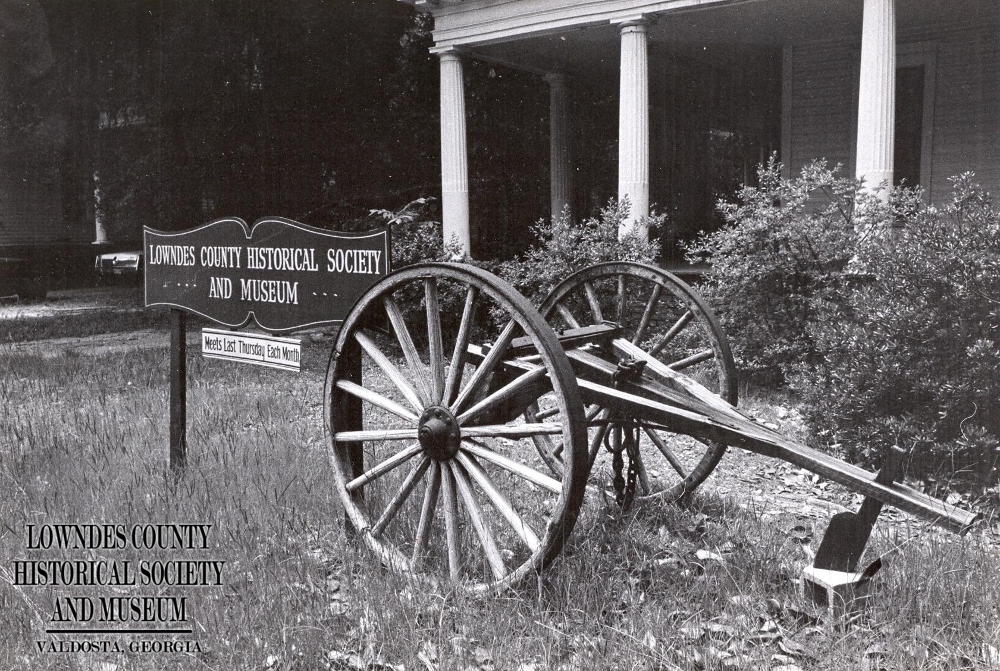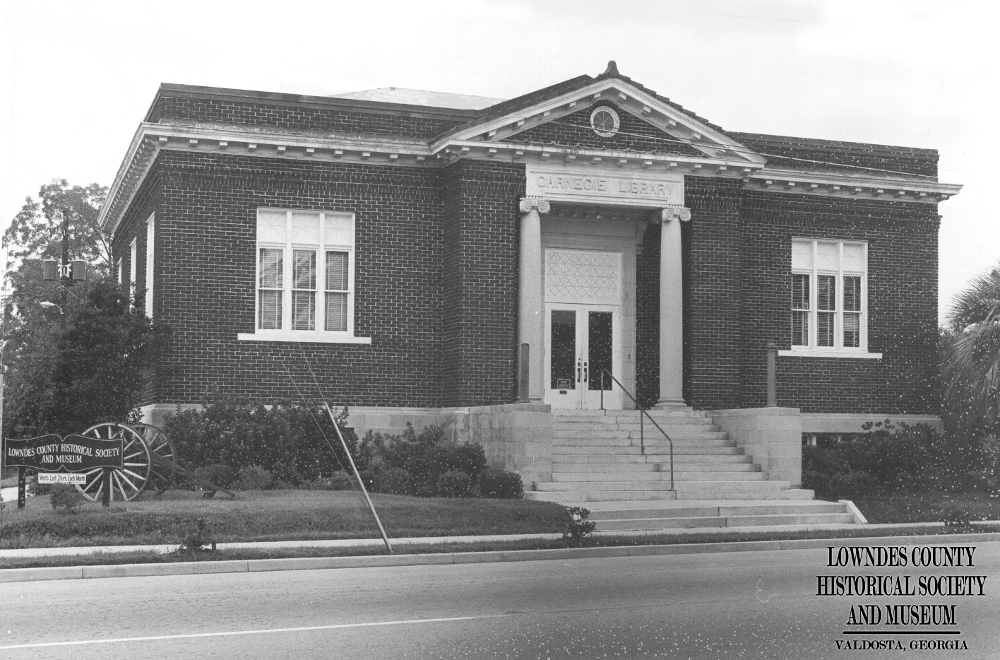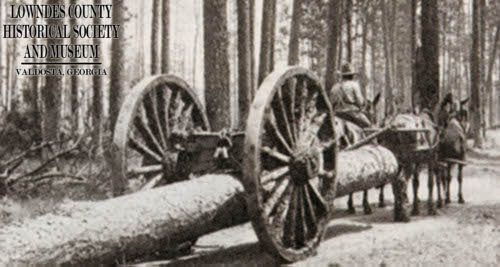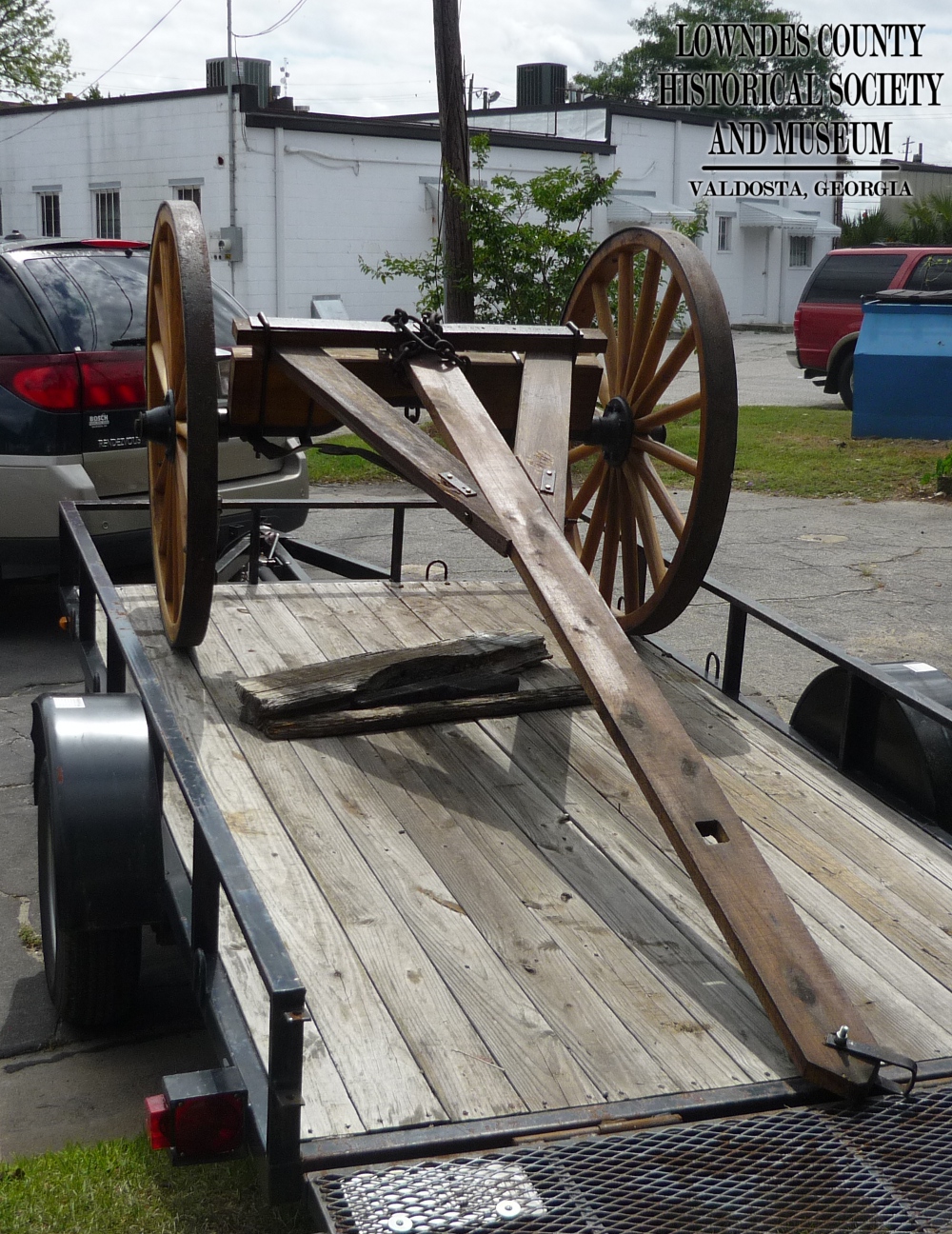 The historic log cart at the Lowndes County Historical Society’s former location at 1110 N. Patterson Street
The historic log cart at the Lowndes County Historical Society’s former location at 1110 N. Patterson Street
The historic wooden log cart, which for many years graced the front yard as a welcoming symbol for visitors, had been curiously absent from the grounds of the museum. But there is a good reason for this.
In 2009, Julian Copeland received the museum’s wooden log cart with the intention of restoring it to its original condition. Due to the cart’s age, much of the wood had become very brittle and broken.
Mr. Copeland’s goal was to replace all of this wood, essentially reconstructing the cart in the same way that it would have been originally built. This was no small project.
Timber carts like these played a big role in the development of Lowndes County. The design of the log cart utilized an Archibald hub, which allowed for a lot more weight to be carried by the wheels. As our county was being settled in the 1800s, these carts would be used to move large logs from old growth pine forests.
Incidentally, wheels with an Archibald hub must be built with great precision. In fact, this type of hub was once used by militaries, through WWI, but replaced because of the difficulty of building them and the expertise it required.
There are not many people today that still practice this type of wheel building. Perchance, Carol Copeland, Julian’s wife, has family in Ohio. On one family visit, they happened to find, in Baltic, Ohio an Amish wheelwright, Marvin Stutzman, who could rebuild the wheels. Stutzman was a builder with sixty years of experience with historic wheel making. The wheels were completed in 2011 and brought back to Valdosta by the Copelands. All was done at no charge to the museum.
The rest of the wood for the frame of the cart was donated by Ray Coulding of Quality Log and Lumber of Lake Park. Only one original piece of wood is retained for the cart, and that is the stand that holds the tongue off of the ground. The metal is also original.
In April of 2012 Julie Copeland, of Dasher, Georgia, returned to the Lowndes County Historical Museum with the historic log cart that he had meticulously rebuilt. The cart had been a iconic part of the Lowndes County Historical Society since our earliest years and Julian Copeland’s hard work ensures that the historic cart will remain a part of the Lowndes County Historical Museum for many years to come. It is now on display for visitors to see in our outdoor exhibit space behind the museum.
In addition to his hardwork on the log cart, Julian Copeland is very involved with the new Dasher Historical Society. We are very grateful for what he has accomplished, in addition to the fantastic work of Marvin Stutzman and the contributions of Ray Coulding of Quality Log and Lumber




